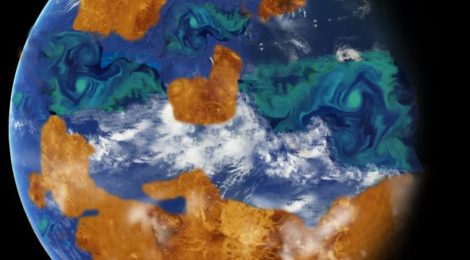
Without Plankton Earth Will Become Like Venus Not Mars
Venus was once a planet with a warm plankton filled ocean and habitable surface temperatures for up to two billion years.
In our evolving solar system our Venusian sister found herself on the too hot side of the Goldilocks Zone, Mars the too cold sister.
We should learn from the suffering of our sister planet Venus, lest we follow her path.
NASA scientists at the space agency’s Goddard Institute for Space Studies (GISS) have created a model of the planet from a wealth of data that suggests it enjoyed a vastly different past to its current form where the surface temperature is that of molten lead.
Michael Way is a researcher at GISS and the lead author of the report which was published in the journal Geophysical Research Letters has noted that the systems we use to study climate change on Earth can give us unprecedented insight into the former environment and climate of other planets.
“Many of the same tools we use to model climate change on Earth can be adapted to study climates on other planets, both past and present,” he said in a statement released by NASA. “These results show ancient Venus may have been a very different place than it is today.”
The Goldilock Sisters.
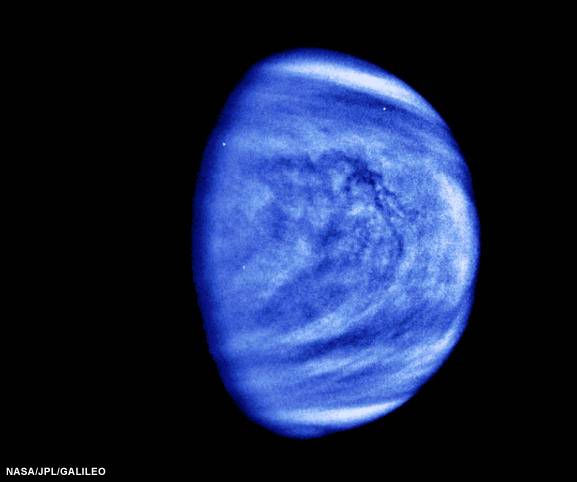
Venus as photographed by the Galileo spacecraft in 1990. The image at the top of this post reveals Venus with its warm ocean 3+ billion years ago.
The astroscience community has for many years been publishing reports of Venus with warm oceans and an atmosphere rich in oxygen. There is a consensus in support of a Venusian epoch where for billions of years conditions suited to, even demanding of, life match perfectly with the same early warm ocean emergence here on Earth where we know for certain life came to be. Today Venus has a thick atmosphere about the same as Earth’s though at the surface the pressure is nearly 100 times that of Earth, about 10% as thick as liquid water would be. The cloudy air of Venus is the perfect greenhouse blanket.
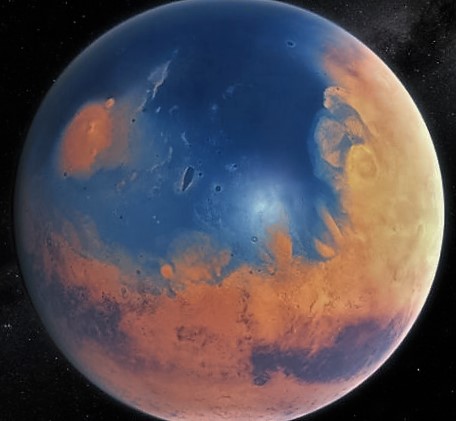
MARS, one of the three sisters, as it might have appeared with warm seas 3.4 billion years ago.
Don’t forget Mars which clearly during the ages of the Venusian sea also had flowing water, vast warm seas, abundant oxygen in its’ atmosphere along with microbial life as seen in Martian fossils. Mars today has about 10% of the atmosphere of Earth or Venus, being much lower mass than Earth and Venus the gravity of Mars has proven too weak to hold onto its atmosphere, hence it is a cold world. Only the most pedantic or religious fanatic can possibly demand that life emerged only here on Earth.
Venus Today = Molten Lead
Venus as we know it today is a hellish place with surface temperatures as high as 462ºC (700ºF), far hotter than the melting point of lead! Today it has a carbon dioxide atmosphere 90 times as thick as Earth’s, no oxygen, and almost no water vapour. However scientists have long theorised that the planet was once made up of similar elements to Earth but given its proximity to the warming Sun it was left to trail behind on the moving zone of life.
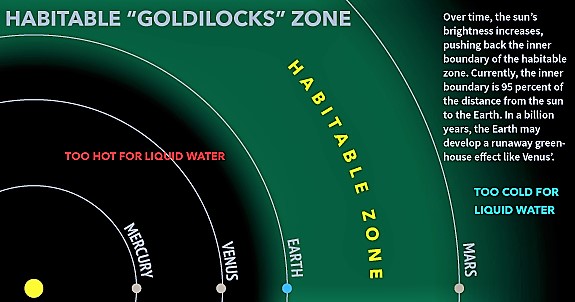
Click to read more about how ocean plankton cooling keeps Earth just barely within the habitable Goldilocks Zone of our solar system. That Goldilocks zone is slowly moving outward.
Plankton Oxygen and Cooling
Evidence from a pioneering mission in the 1980s showed landforms on Venus that are consistent with it once having an ocean. Surely within that warm ocean was life in the form of cyanobacteria and then phytoplankton as Venus somehow developed large concentrations of oxygen as evidenced by widespread oxidation products and eventually an atmosphere dense with CO2, carbon dioxide. Here on Earth it is accepted wisdom that high concentration of oxygen came about via living photosynthesis.
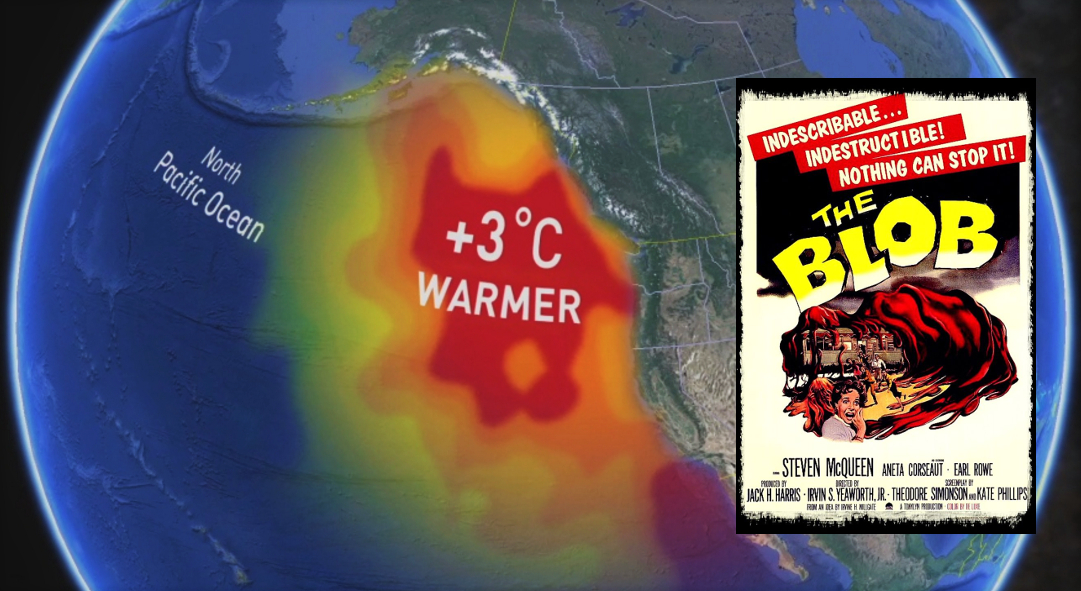
The collapse of plankton cooling is responsible for Earth’s dramatic ocean warming including the now infamous ‘Warm Blob’ in the Pacific – click to read more.
Working on that assumption, NASA used a land-ocean pattern like the one pictured above in a climate model to show how clouds would have shielded ancient Venus from strong sunlight and made the planet’s environment habitable.
As we know the vast majority of clouds here on Earth, sister to Venus, form as a result of the biochemical aerosols and tiny specks of matter that our oceans send into the air. Here on Earth our cooling clouds and life giving rain depend on plankton. At the heart of every raindrop (or microscopic cloud droplet) lies a tiny speck of plankton. Likely long ago the same was true for Earth’s sister.
Venus is the second closest planet to the Sun and thus receives a greater amount of the Sun’s rays which researchers believe eventually caused its early oceans to evaporate and later reduced almost all of its oxygen into its heavy carbon dioxide atmosphere.
NASA also worked off the assumption found in new research that a slower planet rotation doesn’t necessarily mean a thicker atmosphere. Venus’s rotation is very slow, taking 117 Earth days to complete but scientists no longer believe that excludes it from have a habitable environment.
“In the GISS model’s simulation, Venus’ slow spin exposes its day-side to the Sun for almost two months at a time,” co-author and fellow GISS scientist Anthony Del Genio said. “This warms the surface and produces rain that creates a thick layer of clouds, which acts like an umbrella to shield the surface from much of the solar heating.”
He said such a scenario would mean temperatures on Venus long ago were “actually a few degrees cooler than Earth’s today”.
This remarkable paper by NASA and their position that it once showed all of the characteristics of being another ‘warm water planet’, which included all of the characteristics we associate with planktonic life on Earth, is a good lesson for us. (We have added the plankton blooms to NASA’s graphic to patch up its mysteriously missing plankton in those warm Venusian seas. A perfectly logical assumption give the ubiquitous presence of planktonic life on Venus’ sister planet Earth throughout the ages.)
We should take that lesson to heart and make sure that the tiny planktonic hearts of our cooling clouds and life-sustaining rains are restored, regenerated, and sustained.








